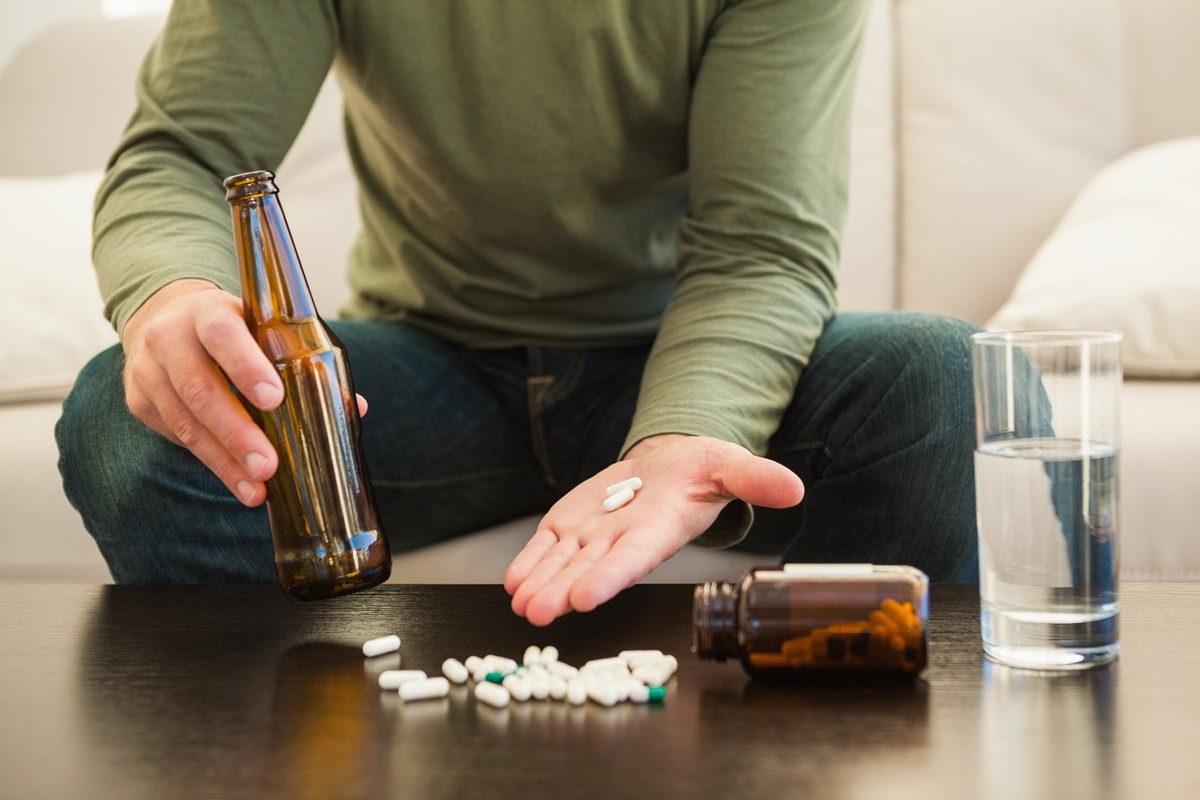Table of Contents
The fact is that antibiotics have different routes of leaving the body. These medications are broken down by the liver, excreted in the urine or pass straight through the gastrointestinal system, after which they end up in the feces. The excretion route determines how long the drugs stay active in the body and how often they need to be taken. What alcohol may do in combination with antibiotics is increase the drugs’ excretion rate or slow down the rate drugs are being broken down. [1]

Alcohol-Medication Interactions
Many medications and not only antibiotics, when combined with alcohol, can cause [2]:
- increased risk of illness
- injury
- death
Some statistics show that alcohol-medication interactions made up at least 25 percent of all emergency room visits.
Incidence of the alcohol-drugs interactions
Over 2,800 prescription drugs are available in the United States today and health experts prescribe 14 billion of them annually. Additionally, there are around 2,000 over-the-counter medications, for which patients do not even need to see a doctor. With 70 percent of the adult population consuming alcohol occasionally and 10 percent drinking daily, some concurrent use of alcohol and prescription or over the counter medications is inevitable. [3]
Although people aged 65 and older make up only 12 percent of the population, they consume 25 to 30 percent of all prescription medications and may be more likely to use them along with alcohol. This puts this age group at particular risk for suffering from the adverse consequences of such combinations. Older people are also more likely to experience medication side effects in comparison to younger people, and these effects tend to get more severe with advancing age.
What Are Antibiotics?
What kind of drugs are antibiotics? These drugs kill or slow the growth of bacteria. They belong to the class of antimicrobials, a larger group which also includes antiviral, antifungal, and anti-parasitic drugs.
Classes of Antibiotics [4]
Aminoglycosides
- Amikacin
- Gentamicin
- Kanamycin
- Neomycin
- Netilmicin
- Streptomycin
- Tobramycin
Carbacephem
- Loracarbef
Carbapenems
- Ertapenem
- Imipenem/Cilastatin
- Meropenem
Cephalosporins
- Cefadroxil
- Cefazolin
- Cephalexin
- Cefamandole
- Cefoxitin
- Ceftriaxone
- Cefepime
Glycopeptides
- Teicoplanin
- Vancomycin
Macrolides
- Azithromycin
- Clarithromycin
- Dirithromycin
- Erythromycin
- Troleandomycin
Monobactam
- Aztreonam
Penicillins
- Amoxicillin
- Ampicillin
- Azlocillin
- Carbenicillin
- Cloxacillin
- Dicloxacillin
- Flucloxacillin
- Mezlocillin
- Nafcillin
- Penicillin
- Piperacillin
- Ticarcillin
Polypeptides
- Bacitracin
- Colistin
- Polymyxin B
Quinolones
- Ciprofloxacin
- Enoxacin
- Gatifloxacin
- Norfloxacin
- Ofloxacin
- Trovafloxacin
Sulfonamides
- Mafenide
- Prontosil (archaic)
- Sulfacetamide
- Sulfamethizole
- Sulfanilimide (archaic)
- Sulfasalazine
- Sulfisoxazole
- Trimethoprim
Tetracyclines
- Demeclocycline
- Doxycycline
- Tetracycline
- Photo courtesy of SteadyHealth

